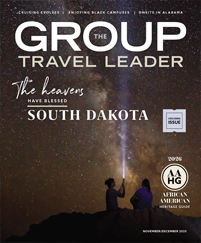People the world over are obsessed with Route 66.
A two-lane road that took travelers from Chicago to Santa Monica, California, before four-lane highways were built, “The Mother Road” spanned 2,448 miles through eight states. Something about the mystique of the road, which traversed the country during simpler times, captures visitors’ imaginations, from the small towns with their old-fashioned gas pumps and motels with neon signs to kitschy roadside attractions and classic Western scenery.
The highway got its start in 1926, but its heyday spanned from the 1930s to the 1960s. Although the road still exists, portions of it have disappeared into history, making it difficult to drive along the entire length.
As Route 66 approaches its 100th anniversary in 2026, cities and towns along the way are making big plans for new attractions, festivals and celebrations. Here are a few of the must-see attractions along the Route 66 as it crosses the country.
Illinois
Route 66 begins in the heart of Chicago, near the intersection of South Michigan Avenue and East Adams Street, across from the Art Institute of Chicago. It travels 301 miles through the state, wending its way through Joliet, Wilmington, Dwight, Odell, Pontiac, Bloomington, Lincoln and Springfield.
Route 66 icons in Chicago include Lou Mitchell’s, a local restaurant and bakery that was founded in 1923 and has served travelers along Route 66 since its inception, as well as The Berghoff, which opened in 1898 and is the oldest nearly continuously operated restaurant on Route 66.
Top attractions along the Illinois route include the Old Joliet Prison, the historic Rialto Theatre and the Joliet Area Historical Museum and Route 66 Welcome Center. In Pontiac, visitors can peruse the Route 66 Hall of Fame and Museum, the Pontiac-Oakland Automobile Museum and Route 66 murals along Main Street. Groups should make sure to take in the Gemini Giant in Wilmington, the Two Cell Jail in Gardner, and restored gas stations in Dwight and Odell.
Memory Lane in Lexington, Sprague’s Super Service gas station in Normal, and the McLean County Museum of History and Cruisin’ with Lincoln on 66 Visitor Center in Bloomington are also worth a visit.
The town of Atlanta is known for its Paul Bunyan Giant, a famous Muffler Man statue holding a hot dog, as well as the Route 66 Memories Museum and the Route 66 Arcade Museum. Lincoln is home to The Mill Museum on 66, which looks like a large Dutch windmill and is now a Route 66 museum; the World’s Largest Covered Wagon; the Postville Courthouse, where Abraham Lincoln practiced law; and the Lincoln Heritage Museum.
Springfield boasts the Abraham Lincoln Presidential Library and Museum, Lincoln Home National Historic Site, Lincoln Tomb, and the Old State Capitol. Henry’s Rabbit Ranch in Staunton is known for its “car henge” made of Volkswagen Rabbits.
Missouri
Route 66 stretches 317 miles through Missouri, from St. Louis to the Kansas state line west of Joplin, passing through Cuba, Rolla, Lebanon, Springfield, Carthage, Brooklyn Heights and Webb City. The Gateway Arch is one of the most famous stops along the route, and The National Museum of Transportation, also in St. Louis, has one of the largest collections of vehicles in the world. The Old Chain of Rocks Bridge, which was built in 1929, spans the Mississippi River between Illinois and St. Louis. It became part of Route 66 in 1936 when the road was rerouted.
The Route 66 Red Rocker, which is the world’s largest rocking chair, sits next to the Fanning Route 66 Outpost, four miles from Cuba. The famous Wagon Wheel Motel in Cuba has served visitors along the route since 1934. Meramec Caverns, the largest commercial cave in Missouri, is a must-see stop along the way.
Kansas
The Kansas leg of Route 66 spans 13.2 miles that cut across the southeast corner of the state on its way to Oklahoma. Galena is the first stop outside of Missouri. There, visitors can visit the Galena Mining and Historical Museum and Cars on the Route, a sandwich and souvenir shop that is housed inside the old Kan-O-Tex gas station. The 1950s International Harvester tow truck that inspired the character Tow Mater in the movie “Cars” sits outside.
The Old Riverton Store has been operating along the route since the 1920s. It is the headquarters of the Kansas Route 66 Association. Baxter Springs features an old rainbow-arched Route 66 concrete bridge and the Crowell Bank, which was robbed by the famous outlaw Jesse James. A restored Phillips 66 filling station is now a museum and information center.
Oklahoma
The Mother Road runs approximately 400 miles through Oklahoma, through Oklahoma City, Tulsa and many smaller towns. The state boasts plenty of Route 66 attractions, including the kitschy Waylan’s Ku-Ku Burger in Miami, which is a 1960s-era restaurant shaped like a giant cuckoo clock, including a yellow cuckoo bird that pops out of the roof. Totem Pole Park near Chelsea is famous for the world’s largest concrete totem pole standing at 90 feet tall.
Claremore is home to the Will Rogers Memorial Museum and the J.M. Davis Arms and Historical Museum, which showcases weapons used by Pretty Boy Floyd and Pancho Villa. The Blue Whale of Catoosa was built in the 1970s as a swimming hole attraction and has since become a major photo-op stop along the route.
The Chandler Route 66 Interpretive Center, housed inside a sandstone armory built by the Works Progress Administration in the 1930s, tells the story of the route.
Pops in Arcadia is famous for its 66-foot-tall pop bottle sculpture that lights up at night with colorful LED lights. Pops has a collection of more than 12,000 soda pop bottles, and visitors can sample more than 650 varieties of soda or grab a bite at the old-fashioned diner.
The Arcadia Round Barn is a famous Route 66 landmark built in 1898. It has been restored and now exhibits Route 66 memorabilia. The Oklahoma Route 66 Museum in Clinton is one of the best along the road, and the National Route 66 and Transportation Museum in Elk City highlights many of the quirky roadside attractions that have made the route famous around the world.
Texas
The Mother Road stretches 177 miles through the Texas Panhandle, passing through Shamrock, Lela, McLean, Alanreed, Groom, Conway, Amarillo, Bushland, Wildorado, Vega, Adrian and Glenrio.
In Shamrock, the Art Deco-style Conoco Tower Station and U-Drop Inn was made famous by its selection as the model for Ramone’s House of Body Art in the Pixar movie “Cars.”
In Amarillo, Cadillac Ranch and The Big Texan Steak Ranch are top Route 66 attractions. Cadillac Ranch is an art installation featuring 10 Cadillacs from 1949 to 1963 buried nose-first in the ground, like an automotive Stonehenge with tail fins. The Big Texan is famous for its 72-ounce steak challenge.
The Midpoint Café in Adrian is a 1950s-themed diner that marks the midpoint of Route 66 and features a sign indicating 1,139 miles to both Los Angeles and Chicago.
New Mexico
New Mexico’s section of Route 66 spans 322.3 miles, from Tucumcari to Albuquerque and onto Gallup near the Arizona border. Top Tucumcari stops include the New Mexico Route 66 Museum, the giant chrome and sandstone Route 66 Monument and Tee Pee Curios, a former gas and grocery store turned souvenir shop with an entrance shaped like a Native American tepee that has its original neon sign. The town’s Blue Swallow Motel, which has served guests since 1939, is famous for its neon sign and vintage cars.
The Blue Hole in Santa Rosa, an 81-foot-deep sinkhole filled with clear, blue water, has been a welcome respite for travelers since before the road existed. Downtown Albuquerque has the distinction of being the place where Route 66 crosses itself because of a realignment at 4th and Central. The Nob Hill neighborhood features large neon archways that hang across four lanes of traffic on both the east and west ends of the neighborhood. Main Street businesses boast original neon signs and roadside attractions.
In Grants, visitors can drive through an 18-foot-tall neon sign that’s shaped like a Route 66 highway marker and stop for photos. The El Rancho Hotel in Gallup hosted celebrities such as John Wayne, Ronald Reagan and Katharine Hepburn as they shot movies in the 1930s and 1940s.
Arizona
From small towns like Seligman and Williams, which seem frozen in time with their neon signs, diners, motels, funky art, shops and gas stations, to larger cities such as Flagstaff and Kingman that were major stops along the route, Arizona is rich in Route 66 nostalgia. America’s Main Street runs 385 miles from Lupton on the Arizona-New Mexico border to just west of Kingman near the California border.
The historic Wigwam Hotel, with its tepee guest rooms, is a must-see in Holbrook. In Winslow, visitors love to snap photos at Standin’ on the Corner Park, which celebrates the Eagles’ hit “Take It Easy” with a life-size statue of an Eagles-like singer and a red flatbed Ford like. In Antares, visitors can snap selfies with Giganticus Headicus, a sculpture that looks as if it belongs on Easter Island. Kingman has several vintage motels with neon signs, including Hill Top Motel and El Trovatore Motel. The Arizona Route 66 Museum and Powerhouse Visitor Center is also a must see.
California
California’s section of the road stretches 316 miles, from Needles on the Arizona border through San Bernardino and Los Angeles to the Pacific Ocean. The Aztec Hotel in Monrovia is one of the few remaining Mayan-style buildings in the U.S. It opened in 1925 along an early alignment of Route 66.
The California Route 66 Museum in Victorville is housed in the former Red Rooster Café and features rotating displays of classic Route 66 memorabilia. In Barstow, Harvey House is one of a network of restaurant-hotels built and operated by the Fred Harvey Company in conjunction with the Santa Fe Railroad. Originally named Casa Del Desierto, Harvey House is now home to two museums, the Route 66 Mother Road Museum and the Western American Railroad Museum.
The California Wigwam Motel in San Bernardino is similar to the one in Holbrook, Arizona. It was built in 1949 and is made up of tepee-style cabins. The two hotels were the inspiration for the Cozy Cone Motel in the “Cars” animated movie. The last photo stop on Route 66 is a sign marking the highway’s terminus at the Santa Monica Pier.









